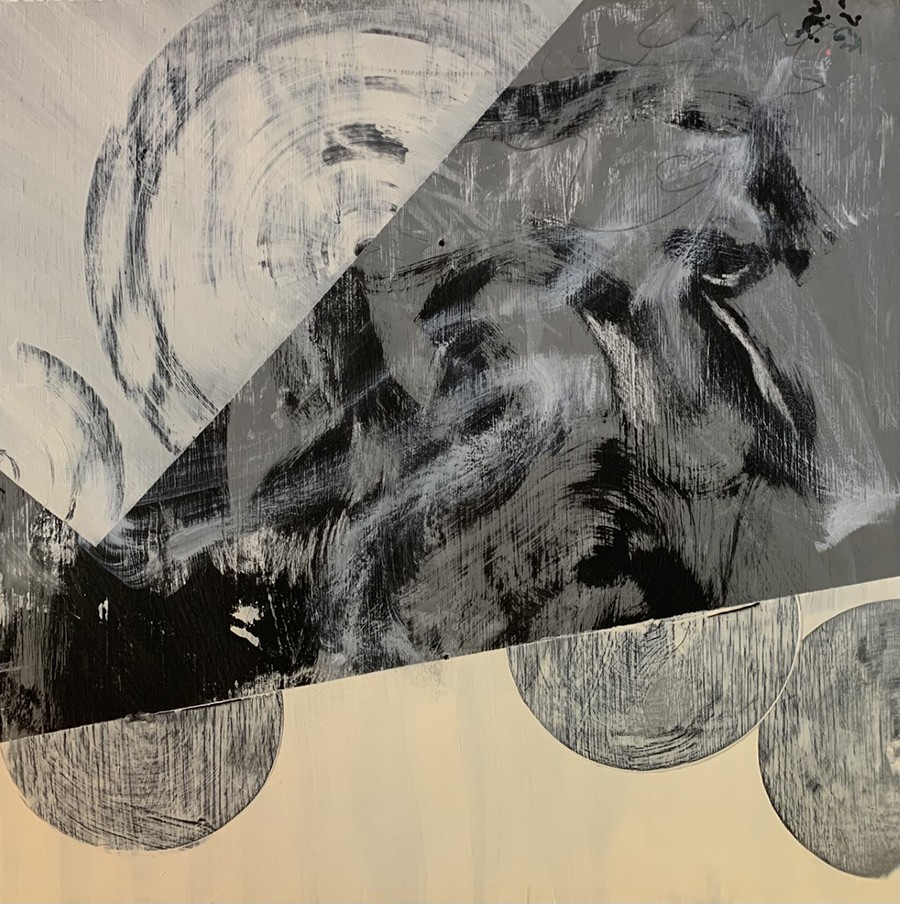
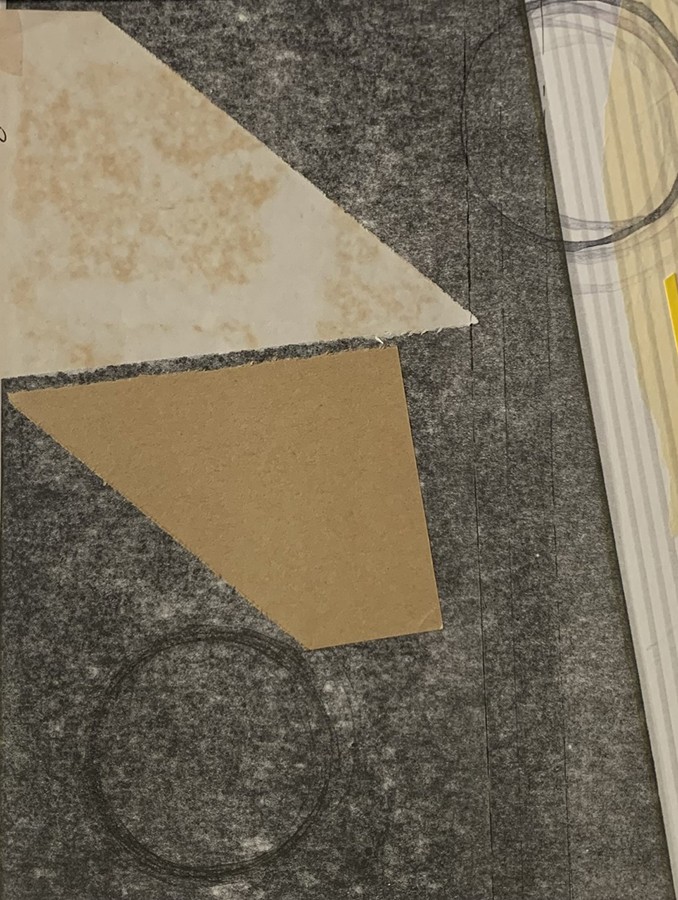
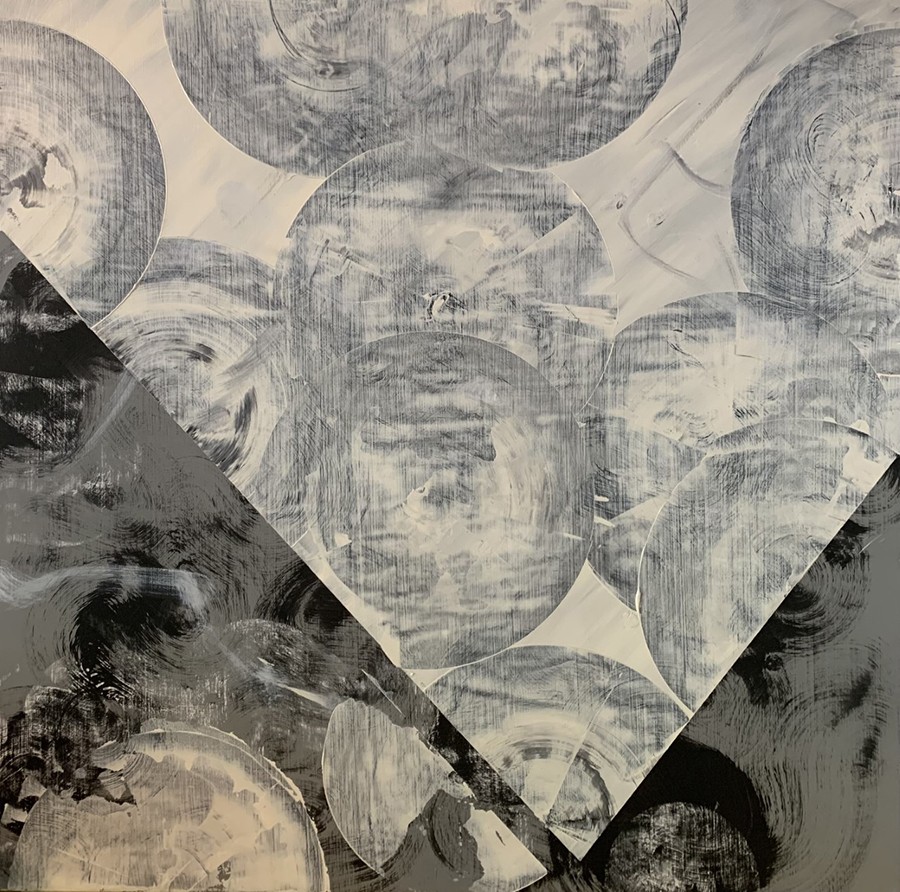

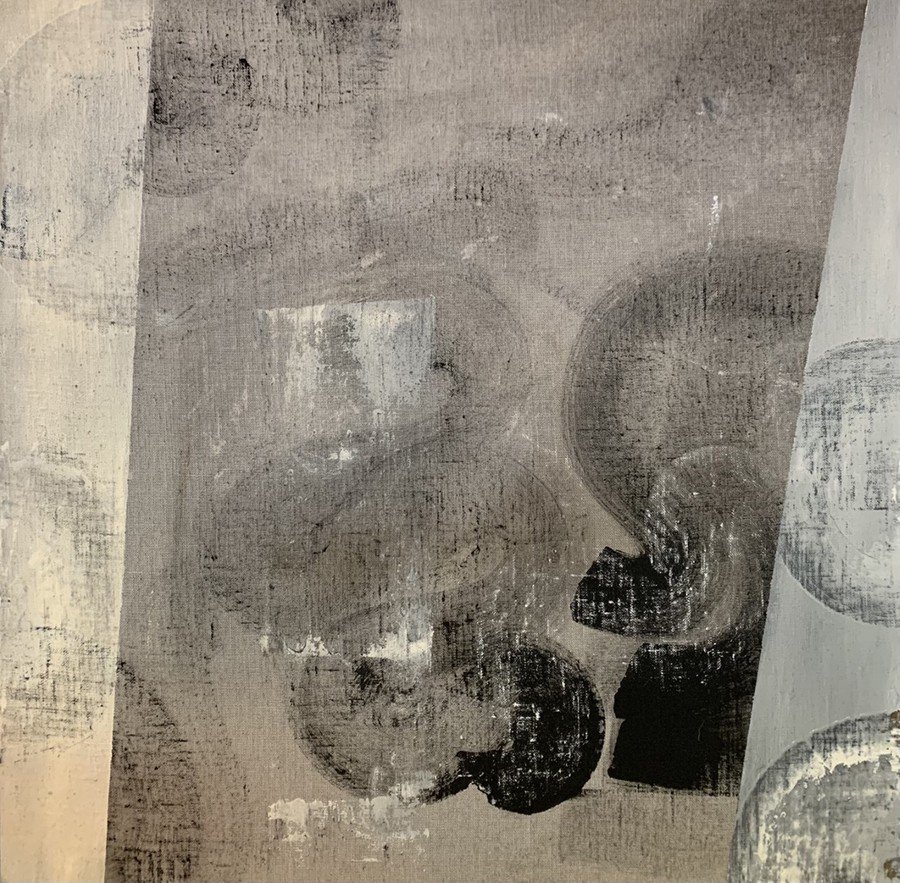
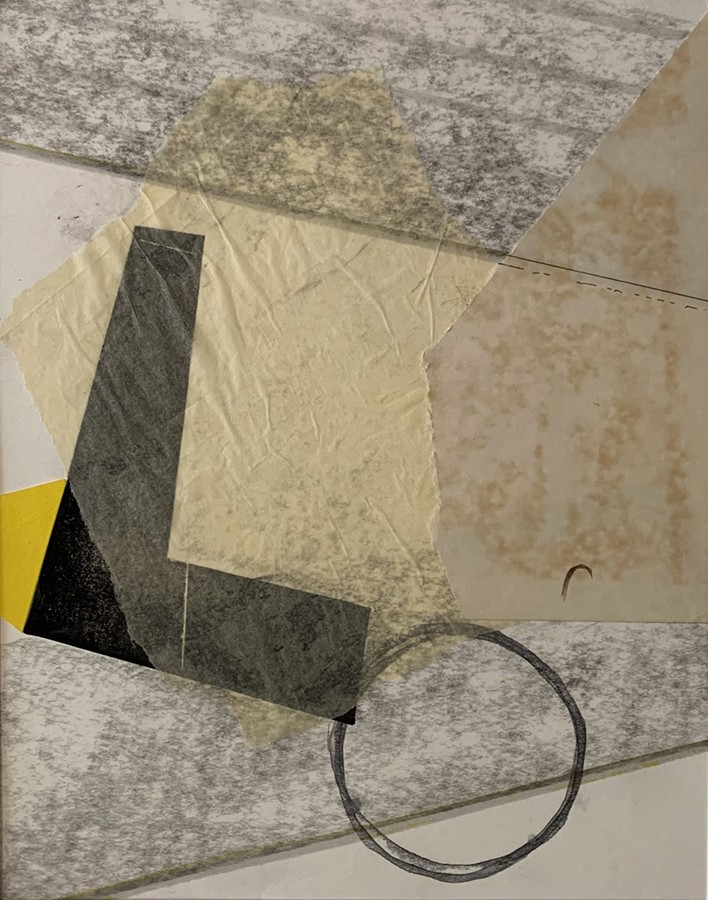
Inside the Artist’s Studio: Back in Black
By Derrick White
“I feel a lot of people think art is not art if it is not recognizable and it is totally ok. The wonderful thing about art is it can be practically anything you want it to be. If my art grabs anyone’s attention or makes them stop and think for a moment, then I think I accomplished in making art and what I want the viewer to experience,” states local artist and educator Rebecca Hollen. She remembers, “My formal education started at Kilgore College. I fell in love with art through a lecture one of the professors was giving about renaissance art and I was hooked. It was a big moment for me, furthering me to want to pursue art. I transferred to the University of Texas at Tyler where I received my Bachelor of Fine Arts degree, Master of Arts degree, and Master of Fine Arts degree. I love learning. I never once got bored or lost any interest the whole time during my art education. It was hard at times, but I never once regretted my decision to pursue art, and this was the path I needed to take. I am from Gilmer, and I commuted an hour to school and an hour back every day while I was working on my degrees at UT Tyler. A lot of people are shocked by this, but I was very dedicated and determined. After I graduated college, I became a middle school art teacher and then a high school art teacher. I try to participate in community projects when I can and encourage my students to do the same. I think it is important that my students see me as a practicing artist and being a part of the community. They need to know I practice what I preach, and I tell them I am an artist first and educator/teacher second.”
Like many artists, Rebecca found inspiration early during her childhood. She recalls, “I remember getting how-to-draw books when I was a child. I would sit in my room at my desk for what felt like hours going through and trying to recreate everything I saw on each page. I would try hard to draw it exactly as I saw it and then I would go show my parents. I would have them critique me on how close my drawing looked to the picture. I continued to take art through school and eventually in college. I remember one time hearing my dad brag about how I could draw something freehand, and it looked like the picture I was drawing. My mom was always a big supporter as well. She told me after I graduated college how she kept all the images I sent her of the work I was doing in the studio. I have been very fortunate and have always had such a wonderful support group.”
Rebecca describes her work as formalist (the study of art examining and contrasting form and design concentrating on the way objects are made and their purely visual qualities). Her process involves thinking of the interactions happening with the visual elements and design principles of art. She is not concerned with depicting anything recognizable other than shapes, forms, and colors. The artist explains, “I love having somethings pop or be bold pulling viewers in and thinking ‘what is this?’ Once they get involved my hope is they can take in the details even if it is not something recognizable. I typically use lots of black, white, gray, and neutral colors with some small pops of bright color as well.” In discussing her method, she explains, “I am using up a lot of older pieces, breaking them down, cutting and ripping them up, using scraps or leftovers of whatever I have. I think it is a good practice to purge occasionally, and it helps growth because I am reimagining something that was and making it new. I like to work big when I can, but this requires more space. In the past, I worked a lot on large pieces of raw canvas and incorporated different medium such as paint, graphite, wood stain and Dura Lar. I always find myself drawn to and finding a way to incorporate some sort of transparent/translucent material. It could be tracing paper, plastic bags, plexiglass, or Dura Lar. I fell in love with printmaking as an undergraduate and I feel a lot of my process reflects on printmaking.”
When talking about the frustrations of artmaking. Rebecca describes it is challenging to have a piece not go the way you are wanting. “I always tell myself at these times it is not about what I want out of a piece of art but what it wants out of me. I also feel finding the time to make art is also one of the most frustrating parts of being an artist. It is very difficult to make art as a full-time career. I know many of us, including myself, are teachers or educators working more than one job and have adult lives but that is also just life. Balancing time to be an artist is one of the most infuriating and most rewarding things of being an artist,” she affirms.
Rebecca Hollen finds inspiration in the work of local artists and friends, stating, “I see them as rivals and competition but also as inspiration and I cheer them on.” She also enjoys the work of James Turrell (U.S. artist known for his mammoth work with light and space), Robert Motherwell (abstract expressionist painter and printmaker), and Barnett Newman (abstract expressionist and color field painter).
When she is not working or making art Rebecca is spending time with her husband, their two dogs and cat. She loves going for walks, nature hikes, reading, and loves to keep her hands busy. She concludes, “This year I started my first vegetable garden and I love plants in general. It is very gratifying to see all your hard work in the end and harvesting what you have grown just like making art.”









